- Clone
- D7715A7 (See other available formats)
- Regulatory Status
- RUO
- Other Names
- IL-6 Receptor α chain, IL-6R
- Isotype
- Rat IgG2b, κ
- Ave. Rating
- Submit a Review
- Product Citations
- publications
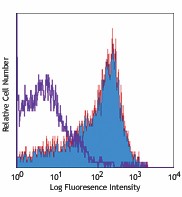
-

C57BL/6 mouse splenocytes stained with LEAF™ purified D7715A7, followed by biotinylated anti-rat IgG and Sav-PE
| Cat # | Size | Price | Quantity Check Availability | Save | ||
|---|---|---|---|---|---|---|
| 115815 | 100 µg | 182 CHF | ||||
| 115816 | 1 mg | 671 CHF | ||||
CD126 is an 80 kD IL-6 receptor α chain also known as IL-6R. It is a member of the immunoglobulin superfamily that is expressed on activated T and B cells, monocytes, hepatocytes, and plasma cells. High affinity IL-6 receptors are formed by the non-covalent association of CD126 and the IL-6 receptor β chain (CD130 or gp130). CD126 binds IL-6 with low affinity, but does not signal. The β chain (gp130, CD130) does not bind IL-6 by itself, but associates with the α-chain/IL-6 complex to initiate signal transduction. IL-6 binding to the receptor complex results in the stimulation of B and T cells, and hematopoietic precursor proliferation and differentiation. The D7715A7 (15A7) antibody blocks IL-6/IL-6 receptor interactions.
Product DetailsProduct Details
- Verified Reactivity
- Mouse
- Antibody Type
- Monoclonal
- Host Species
- Rat
- Immunogen
- OKT4 hybridoma cells
- Formulation
- 0.2 µm filtered in phosphate-buffered solution, pH 7.2, containing no preservative.
- Endotoxin Level
- Less than 0.01 EU/µg of the protein (< 0.001 ng/µg of the protein) as determined by the LAL test.
- Preparation
- The Ultra-LEAF™ (Low Endotoxin, Azide-Free) antibody was purified by affinity chromatography.
- Concentration
- The antibody is bottled at the concentration indicated on the vial, typically between 2 mg/mL and 3 mg/mL. Older lots may have also been bottled at 1 mg/mL. To obtain lot-specific concentration and expiration, please enter the lot number in our Certificate of Analysis online tool.
- Storage & Handling
- The antibody solution should be stored undiluted between 2°C and 8°C. This Ultra-LEAF™ solution contains no preservative; handle under aseptic conditions.
- Application
-
FC - Quality tested
Block, IP, Neut - Reported in the literature, not verified in house - Recommended Usage
-
Each lot of this antibody is quality control tested by immunofluorescent staining with flow cytometric analysis. For flow cytometric staining, the suggested use of this reagent is ≤ 1.0 µg per million cells in 100 µl volume. It is recommended that the reagent be titrated for optimal performance for each application.
- Application Notes
-
Additional reported applications (for the relevant formats) include: immunoprecipitation1,2,5, in vivo receptor blocking1-2,4-6,8, and in vitro neutralization7. For most successful immunofluorescent staining results, it may be important to maximize signal over background by using a relatively bright fluorochrome-antibody conjugate (Cat. No. 115806) or by using a high sensitivity, three-layer staining technique (e.g., including a biotinylated antibody (Cat. No. 115804) or biotinylated anti-rat IgG second step (Cat. No. 405402), followed by SAv-PE (Cat. No. 405204)). The LEAF™ purified antibody (Endotoxin <0.1 EU/µg, Azide-Free, 0.2 µm filtered) is recommended for functional assays (Cat. No. 115808).
Please note, this clone had previously reported reactivity to rat, however upon further testing it has been determined to not react with rat. -
Application References
(PubMed link indicates BioLegend citation) -
- Coulie PG, et al. 1990. Curr. Top. Microbiol. Immunol. 166:43. (Block, IP)
- Vink A, et al. 1990. J. Exp. Med. 172:997. (Block, IP)
- Sun R, et al. 2004. J. Immunol. 172:5648. (FC)
- McKinney WJ, et al. 1998. Am. J. Respir. Cell Mol. Biol. 18:696. (Block)
- Weigert C, et al. 2006. J. Biol. Chem. 281:7060. (Block, IP)
- Koizumi N, et al. 2007. J. Immunol. 178:1767. (Block)
- Walker F, et al. 2008. Blood 111:3978. (Neut) PubMed
- Yadav M, et al. 2008. J. Immunol. 180:2772. (Block) PubMed
- Sintes J, et al. 2010. J. Leukoc. Biol. 88:687. PubMed
- RRID
-
AB_2810349 (BioLegend Cat. No. 115815)
AB_2810350 (BioLegend Cat. No. 115816)
Antigen Details
- Structure
- Ig superfamily, associates with IL-6Rβ chain (CD130, gp130), 80 kD
- Distribution
-
Activated T cells and B cells, monocytes, hepatocytes, plasma cells
- Function
- Stimulates T cells, B cells, hematopoietic precursor proliferation and differentiation
- Ligand/Receptor
- IL-6
- Cell Type
- B cells, Mesenchymal Stem Cells, Monocytes, Plasma cells, T cells, Tregs
- Biology Area
- Cell Biology, Immunology, Innate Immunity, Neuroinflammation, Neuroscience, Signal Transduction
- Molecular Family
- CD Molecules, Cytokine/Chemokine Receptors
- Antigen References
-
1. Taga T, et al. 1997. Annu. Rev. Immunol. 15:797.
2. Fitzgerald K, et al. 2001. The Cytokine FactsBook. Academic Press London.
3. Boulanger MJ, et al. 2003. Science 300:2101. - Gene ID
- 16194 View all products for this Gene ID
- UniProt
- View information about CD126 on UniProt.org
Related FAQs
- Do you guarantee that your antibodies are totally pathogen free?
-
BioLegend does not test for pathogens in-house aside from the GoInVivo™ product line. However, upon request, this can be tested on a custom basis with an outside, independent laboratory.
- Does BioLegend test each Ultra-LEAF™ antibody by functional assay?
-
No, BioLegend does not test Ultra-LEAF™ antibodies by functional assays unless otherwise indicated. Due to the possible complexities and variations of uses of biofunctional antibodies in different assays and because of the large product portfolio, BioLegend does not currently perform functional assays as a routine QC for the antibodies. However, we do provide references in which the antibodies were used for functional assays and we do perform QC to verify the specificity and quality of the antibody based on our strict specification criteria.
- Does BioLegend test each Ultra-LEAF™ antibody for potential pathogens?
-
No, BioLegend does not test for pathogens in-house unless otherwise indicated. However, we can recommend an outside vendor to perform this testing as needed.
- Have you tested this Ultra-LEAF™ antibody for in vivo or in vitro applications?
-
We don't test our antibodies for in vivo or in vitro applications unless otherwise indicated. Depending on the product, the TDS may describe literature supporting usage of a particular product for bioassay. It may be best to further consult the literature to find clone specific information.
Other Formats
View All CD126 Reagents Request Custom Conjugation| Description | Clone | Applications |
|---|---|---|
| Biotin anti-mouse CD126 (IL-6Rα chain) | D7715A7 | FC |
| PE anti-mouse CD126 (IL-6Rα chain) | D7715A7 | FC |
| APC anti-mouse CD126 (IL-6Rα chain) | D7715A7 | FC |
| PE/Cyanine7 anti-mouse CD126 (IL-6Rα chain) | D7715A7 | FC |
| Ultra-LEAF™ Purified anti-mouse CD126 (IL-6Rα chain) | D7715A7 | FC,Block,IP,Neut |
Customers Also Purchased
Compare Data Across All Formats
This data display is provided for general comparisons between formats.
Your actual data may vary due to variations in samples, target cells, instruments and their settings, staining conditions, and other factors.
If you need assistance with selecting the best format contact our expert technical support team.
-
Biotin anti-mouse CD126 (IL-6Rα chain)
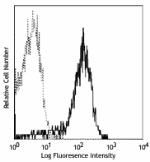
F0 mouse myeloma cell line stained with D7715A7 PE -
PE anti-mouse CD126 (IL-6Rα chain)

F0 mouse myeloma cell line stained with D7715A7 PE -
APC anti-mouse CD126 (IL-6Rα chain)
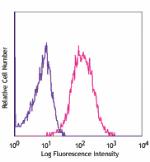
Mouse myeloma FO cells stained with D7715A7 APC -
PE/Cyanine7 anti-mouse CD126 (IL-6Rα chain)
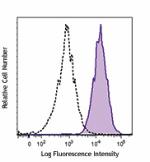
Mouse myeloma cell line FO was stained with CD126 (clone D77... -
Ultra-LEAF™ Purified anti-mouse CD126 (IL-6Rα chain)
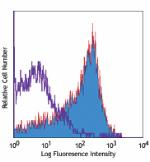
C57BL/6 mouse splenocytes stained with LEAF™ purified D7715A...
 Login / Register
Login / Register 






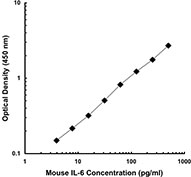
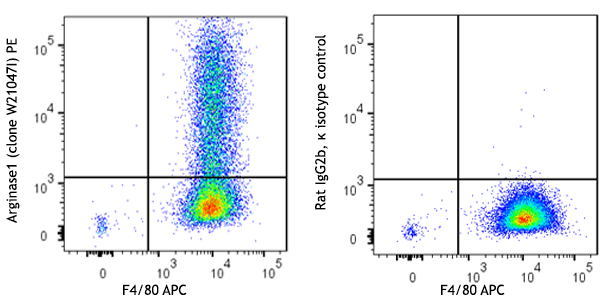

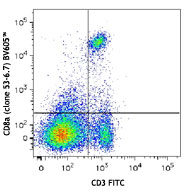



Follow Us